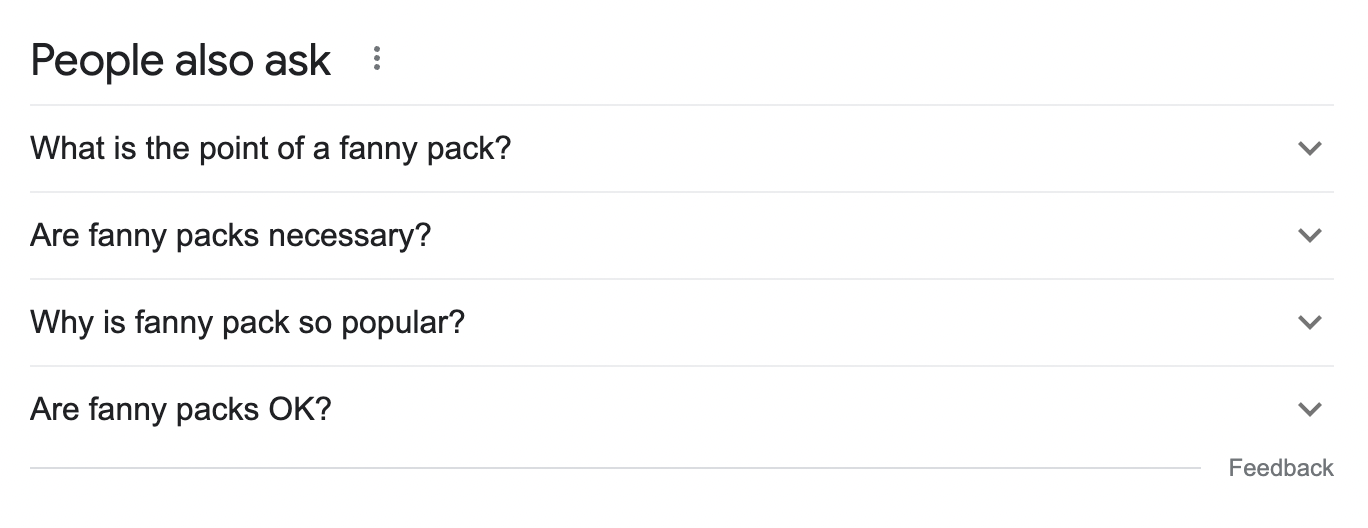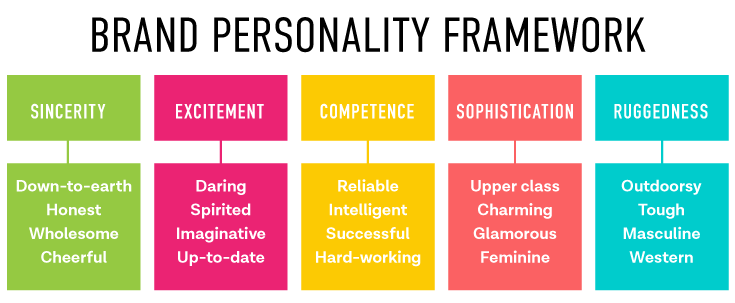Sending your data to our servers, please wait...





Oops... No results found.
Please try a different search phrase.
Digital Marketing 15 min read
B2B SaaS Content Marketing: Everything You Need to Know
Written by Dallin Porter
Marketing Director @ Galactic Fed
Expert reviewed by Dallin Porter
Marketing Director @ Galactic Fed
Published 28 Jul 2020
Following our Content Marketing & The Marketing Funnel: The Definitive Guide, we are breaking down what that application of this looks like for some of the biggest industries Galactic Fed works with. If you’re in the B2B SaaS industry - this one’s for you. And if you haven’t begun getting serious about your content marketing strategy, you’re in the right place. Why? Because 73% of organizations surveyed said that by 2020, at least 80% of their apps will be SaaS, which is of course only expected to grow. And by 2030, the SaaS market size is projected to grow to almost 1 TRILLION USD.
When it comes to B2B SaaS, a lot of the products can appear complicated to understand, or require some degree of explanation, tutorial, or how-to. And in this ever-evolving world, there’s plenty of ways to get it wrong. In this respect, content marketing and the B2B SaaS industries are a match made in heaven, since content marketing has exploded alongside the development and popularity of SaaS. Jamie Turner, a sports marketer, said it best: “The only way to win at content marketing is for the reader to say, ‘This was written specifically for me.”
What’s more, it’s almost guaranteed that your efforts will pay off. According to Semrush, 97% of SaaS companies have seen at least some success with their content strategy. Consequently, 75% of SaaS businesses are planning to increase their cotent marketing budget in 2023.
What is a Content Marketing Strategy?
It’s first helpful to identify what we mean when we say a “content marketing strategy.” Our eyes and ears are flooding daily with the C-word, and it’s hard to differentiate what is helpful, what converts people into customers, and what is just noise.
Let’s take it straight from the source - the Content Marketing Institute (who would seem like they know what they’re talking about) says that a content marketing strategy is a “strategic marketing approach focused on creating and distributing valuable, relevant, and consistent content to attract and retain a clearly defined audience — and, ultimately, to drive profitable customer action.”
At Galactic Fed, we are extremely familiar with a content marketing strategy (CMS) not only because we develop and publish our own, but we also implement them for our clients. It’s kind of our thing. Because of that, we’re going to share with you, the B2B SaaS marketing crowd, exactly the steps you can take to develop your own SaaS marketing strategy and ultimately, turn your content into customers.
Step 1: Research what your audience wants
Although it could be argued that this should be the first step for any type of strategy, it’s of the utmost importance for creating one for the ubiquitous B2B SaaS industry. Since your brand is making the content for your audience, you need to be sure it’s what they need, want, care about, or will even look at. This could also be called gaining customer insights, and it’s these insights that will shape the direction, look, and feel of your CMS. There are seemingly endless, and relatively easy, ways to conduct this research: you can take a look at already existing content of yours to see which performs the best, you can take a look at competitors’ content to see what people are engaging with, and you can use keywords tools like SEMrush or use the Google Suggest feature.
Let’s say you’re a social media scheduling and analytics company that provides tools for businesses to plan, share, and schedule all of their content in one place. If you were to search “how do I schedule social media posts in advance?” you also have the option of taking a look at the “people also ask” function on Google. This provides insight into similar queries people are searching for, but it can also serve as great inspiration for the content you should create - because, clearly people are looking for it. In this instance, as seen below, you could add a blog or video (we will get into content types in just a bit) into your CMS that answers the sought after question of “what should I look for in a social media management tool?”

Another obvious but often overlooked approach is ASK! Ask your customers. Ask what they want to see, what pain points they have in understanding your app or software, and what types of content they love to consume. Use your social media channels as a market research tool, as if it gives you one-to-one contact with the people you’re creating the strategy for. It will allow you to learn the language of your audience, and also build brand sentiment as you are saying to your customers or followers “ask and you shall receive.” If you don’t have this one to one with your audience just yet, talk with your sales colleagues/department to ensure that what you’re delivering is actually being requested.
To summarize, here are the steps you could take to research what your audience wants:
- Identify your Buyer Persona: Who’s your typical customer, what are their pain points and jobs to be done, what could motivate them to buy your product.
- Listen to your existing customers: Read online review, conduct surveys, see their comments on social media.
- Analyse your competitors: See what content performs best, what their customers say about the product, where you stand out and where you could improve.
- Look into analytics: What content performs best? Where visitors bounce the most? How they explore the website? You data will give you great insights on your users behavior and what kind of content resonates with them.
Step 2: Put yourself in the buyer’s shoes
The whole point of a content marketing strategy is to guide your potential customer through the content marketing funnel; from unaware, uninformed, internet stranger, to educated, loyal, brand ambassador. This means you need to understand the buyer’s journey. You have to put yourself in their shoes, and walk yourself through what it takes to go from first click, to credit card swipe.
Map out what type of understanding your customer would have at the Top of the Funnel (TOFU), Middle of the Funnel (MOFU) and Bottom of the Funnel (BOFU.) This includes thinking about what questions they’d have, and what they’d need to move on to the next -FU. After you’ve done your research and started to get ideas, look at where your content fits within the marketing funnel. You’re probably not going to provide case studies to someone who doesn’t even know what your product does. You can’t expect your potential customers to jump straight from question to conversion - you need to provide value first.

Let’s say you’re a project management software company, this means that you most likely have both personal and professional users, and users who have varying models i.e. free vs. premium. You need to address pain points that each of these groups may have. This may look like a FAQ blog for initial buyers, who are just getting familiar, and a “Project Management: The Definitive Guide” for your enterprise clients who’ve been around the block. A stellar content strategy would also simultaneously create content that leads that free user to a paying customer; perhaps a video tutorial that shows the awesome features from the paid version. Our Content Marketing & The Marketing Funnel Guide breaks down exactly what types of content perform the best at each stage, and how you can guide your audience from top to bottom - the only time you’d want your customers at the bottom.
Step 3: Create content that supports your goals
The research aspect of your CMS is crucial, and understanding your audience is imperative, but you are, after all, a business. This means that the content you are creating needs to support the goals of your B2B SaaS marketing business, and not just provide value for your customers only. In the beginning stages of strategizing, nail down some defined, measurable results that you want to see. This would be the fourth stage of the flowchart below.

Depending on where you’re at in the evolution of your company, this may vary. Your focus could be lead generation, audience education, or customer retention - or, all of the above. Without setting relevant and achievable goals that align with the overall marketing strategy, your content will be in vain. The focus of your goal then, should influence which metrics you measure and how you analyze your analytics.
For example, if you’re an HR management software company with the goal of lead generation, a metric to measure this success could be #’s of free trial downloads. You then can craft and create content that will deliver this objective. You could create a gifographic (yes, that’s a real thing) that highlights the benefits of your product, or some impressive performance stats, with a CTA to download a free trial. You set your goal, you choose your KPI, and then you create the content that will get those results. Likewise, if you want to increase customer retention, your content strategy could be a loyalty program, or members-only newsletter.
Here are some other common SaaS content marketing examples that you could implement in your strategy:
- User guides
- Knowledge base
- YouTube channel with how-to videos
- Podcasts
- Downloadables
Step 4: Show your audience who you are
86% of consumers who were asked said that authenticity is a key factor in deciding what brands to like and support. This means that consumers can easily distinguish when a brand is being transparent vs. saving face. Although a major step in the content marketing process, it can also be quite a bit of fun, if done correctly. You set the tone of how you want your content to be received, communicated through your brand voice. It’s important to differentiate between the two: your brand voice is the personality of your brand, and the tone can change based on the medium or the message - but it should always be apparent that it’s yours.
Buffer, a social media software company hits the nail on the head when it comes to showcasing brand identity. They achieve the goal of fusing their product with their personality, and, in addition to promoting their tool, showcase content that highlights their brand’s willingness to learn and grow. Sure, you want to create content to grow your engagement and increase visibility, but you also want people to enjoy the content of yours that they consume, or else they won’t be returning. What they’re doing is a brilliant example of SaaS content marketing strategy execution.

Most B2B SaaS brands fall into one of the below categories, and deciding who your brand is before you start releasing content makes the strategizing process much easier.
Think of your brand as a person - what kind of personality would they have? How would they act in a group of people? List adjectives that describe this personality and weave that tone of voice, approach, and attitude through every piece of content you create. Yes, every. It should be apparent in every Instagram caption, blog title, and paragraph on your website. Then - go nuts; create surveys, infographics, podcasts. Take testimonials from clients or case studies and present them in an interesting way. Look at what other companies are doing and then create the things you wish to see but don’t. And remember, a little humor goes a long way.
Step 5: Distribute and amplify to maximize returns
This step may be the most overlooked but also the one that returns the most rewards. Nothing is worse than spending time and resources researching and creating content, only to hit “post” once, and then leave it to die in the content graveyard. Especially considering the fact that 60% of B2B SaaS marketers create at least one piece of content a day, it’s no longer a viable strategy to simply create, share, and hope for the best.
This is where cross-platform publishing is huge; it’s essentially an ongoing focus group. You get to see what types of content perform the best on which platforms, which audiences respond most positively to what you’re creating, and can help guide you into editing and tweaking your CMS based on real-time insights.

For example, if your company, a finance management tool for enterprise, has written a blog about “The Top 5 Finance Apps in 2020,” you’d post it on your blog, and then adapt its contents to better suit your identified target platforms. This may be sharing long-form excerpts from the blog on Reddit, infographics on Facebook, or discussion points regarding the blog on LinkedIn. Then, follow up with commenting and engaging with those who like, comment, and share on these posts.
Other tactics to make sure your content gets the spotlight it deserves is investing in SEO expertise, paid ads, or an email marketing list. It should also be noted that the workflow for how you distribute your content should be integral to your CMS, not something that’s done ad hoc once you go to share it with the world. After all this is done, analyze the performance of your content frequently so you can always refine your marketing strategy to maximize effectiveness.
It comes as no surprise that 69% of B2B marketers said they have a content marketing strategy documented, up from only 37% two years ago. For B2B SaaS, it’s not so much a case of “if” but “when.” Using this guide as your blueprint, you’ll learn how to create a content marketing strategy that can catapult your brand in front of the eyes of the businesses and people who need your product the most. And if you want to see great SaaS content marketing examples in action, we recommend this blog.

Dallin Porter
Marketing Director @ Galactic Fed



